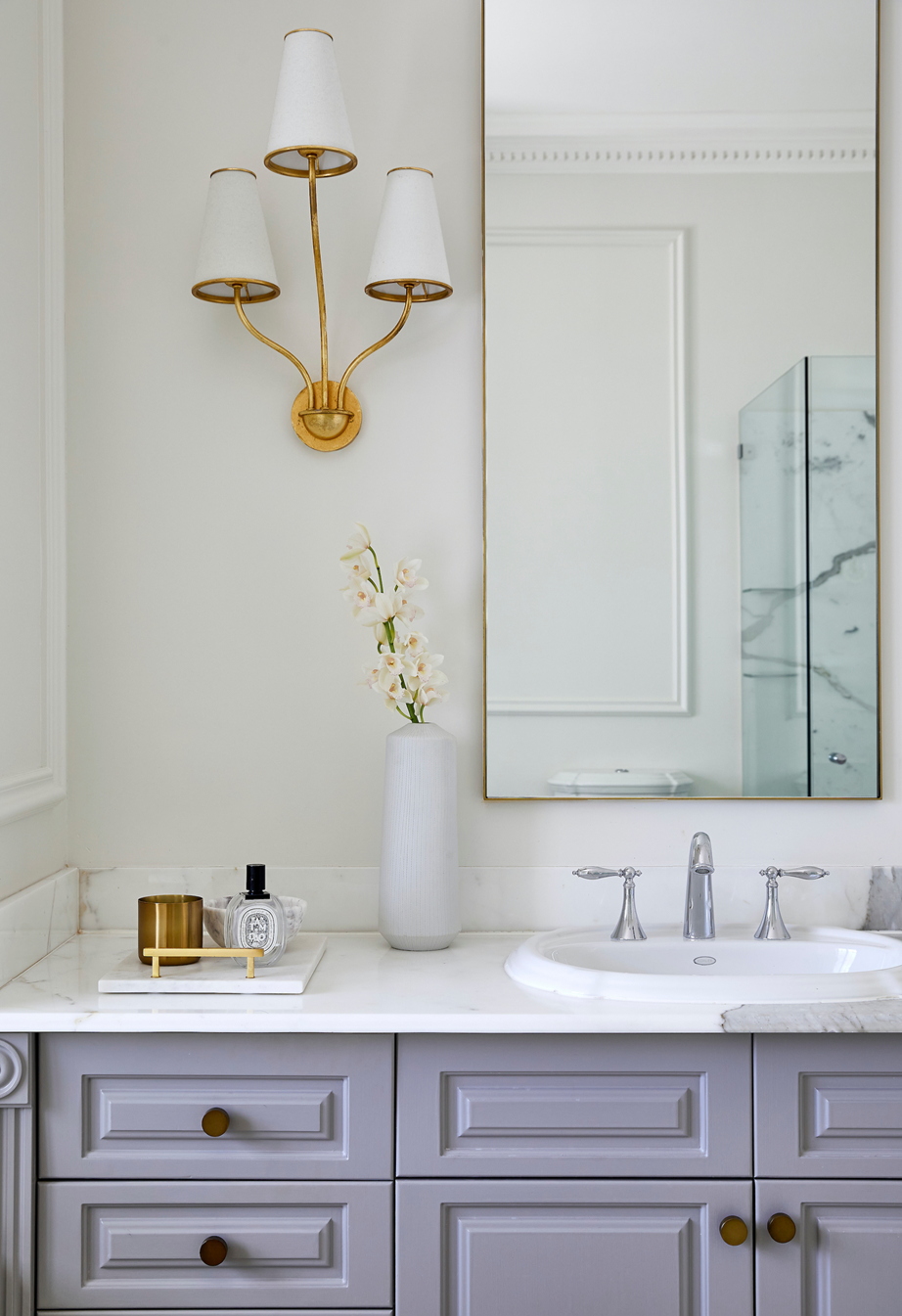Nothing sets the scene like candlelight at home to provide a welcoming fragrance or to encourage relaxation.
Aficionados know that you get what you pay for when buying candles. The best candles are often the priciest, reflecting the raw materials, time and skill that have all come together to make your home smell amazing. And, if you've spent a pretty penny on your candle collection, it's only natural to want to make each candle last longer.
But it's the little things you're doing that are compromising the burning experience and the long life of your candle. We spoke to Winnie van Donk at Candle Kiosk to find out how to avoid 5 of the most common mistakes people make when burning candles.

Burning a candle may seem like a simple task but there are a few tricks that will help your favourite candles last longer. A candle in a gold vessel complements the classic features in this bathroom at an interior designer's Wahroonga home.
Photo: Pablo Viega / Styling: Stephanie Powell
1. NOT SETTING THE MEMORY OF YOUR CANDLE
A common mistake is to not let the candle burn for long enough during the first burn.
The size of the wax pool during the first burn determines the life of the candle; subsequent burns won't melt the wax beyond the initial wax pool, so if it didn't melt close enough to the edge of the candle, tunneling (when a candle burns hollow, i.e. leaves a thick, unused mantle or rim) might occur.
Tunnelling can be avoided by making sure the initial burn is long enough to melt the candle all the way to the edge. This is called 'setting the memory' of the candle.
DO THIS INSTEAD
As a rule of thumb, burn a new candle for 1 hour per 2.5cm (1 inch) in diameter. So for a 7.5cm (3 inch) diameter candle, the initial burn time should be at least 3 hours.
2. NOT TRIMMING THE WICK
A wick that is too long can cause a candle to start smoking. Keep your wick trimmed at all times; a trimmed wick creates a calm, steady flame, which means the candle's burning process is in balance.
The wick is efficiently pulling up the right amount of wax, and the flame creates complete combustion. A wick that is too long won't be able to draw wax all the way to the top, and the wick itself will start to burn, causing it to smoke.
DO THIS INSTEAD
Before lighting, trim the wick to 6mm (1/4 inch) and remove any wick debris. Any debris left in the wax pool can disturb the burning of the candle.
3. PLACING THE CANDLE TOO CLOSE TO DRAUGHTS
A candle that is in a draught can start flickering and will likely smoke, and a strong draught can cause a candle to start dripping.
DO THIS INSTEAD
To avoid this, eliminate the source of the draught, move the candle out of the draught or shield the candle from the draught.
Candles that are placed close to a draught will burn quicker.

In this heritage Melbourne home, a scented candle is shielded from drafts in a cosy corner of the bedroom. Photo: Alex Reinders / Styling: Sarah Elshaug
4. USING THE WRONG CONTAINER
Candles look great and burn safely inside a container or vase, however make sure you use the right size container.
If the vase is too small for the candle, the candle might start flickering and smoking.
DO THIS INSTEAD
Use a container that is open on both sides (top and bottom) so hot air can rise out and cold air can get sucked in from the bottom, or;
Choose a bigger container and/or smaller candle - make sure that there is roughly half the candle diameter of space between the candle and the vase edge eg. For a 7cm candle, there should be at least 3.5cm of space between the candle and the edge of the container
It's important to select a vessel that is an appropriate size, says Winnie.
5. PLACING CANDLES TOO CLOSELY TOGETHER
A setup with multiple candles in a variety of size can look beautiful, yet make sure the distance between the candles is large enough to avoid irregular melting, warping and ultimately dripping.